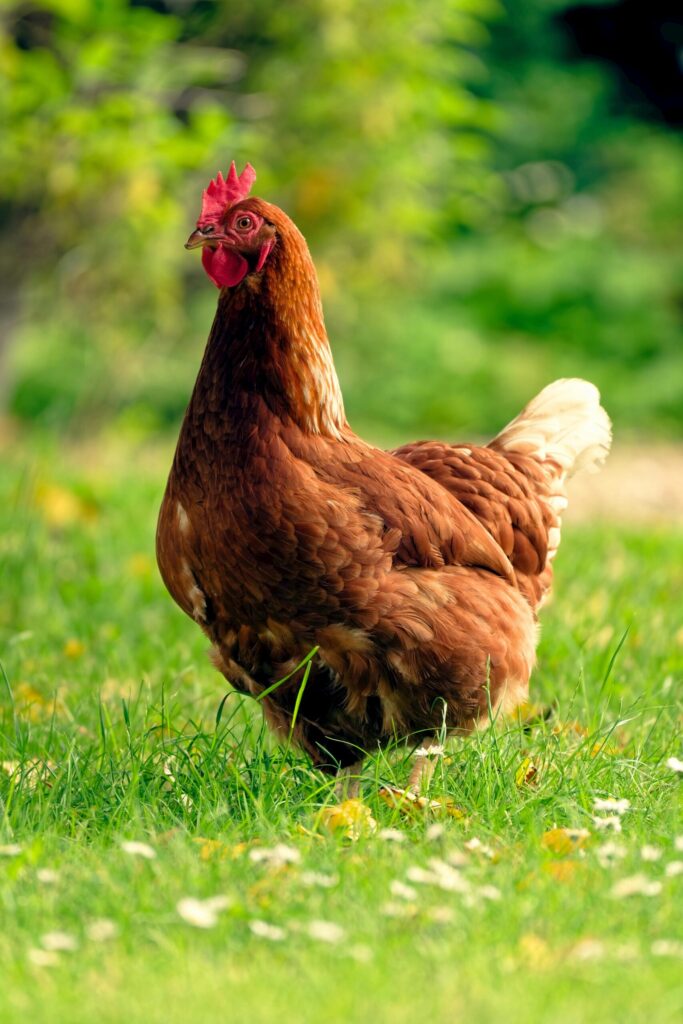FAQ
ISA Brown
ISA Brown is globally recognized for its exceptional feed conversion, high egg production, and robust adaptability to various environments. Unlike many other breeds, it maintains strong laying persistency across longer cycles and produces consistently high-quality brown eggs — making it one of the most efficient and profitable choices for egg producers.
Under optimal conditions, a single ISA Brown hen can produce up to 470 high-quality eggs in a cycle extending to around 100 weeks. This high level of productivity, combined with efficient feed usage, makes it a favorite among commercial and mid-scale poultry farmers.
Yes, ISA Brown has been bred and tested for performance across a wide range of housing systems, including cage, floor, and aviary setups. It adapts well to varying climate conditions — from temperate to tropical — and maintains productivity with proper management and nutrition.
ISA Brown hens thrive on a balanced, high-quality layer feed that supports egg production, shell strength, and overall health. Feeding schedules and formulations should follow the rearing and production tables provided in our product guide to ensure optimal results throughout each phase of growth and laying.
With the PRIMA app, you can track real-time data on your flock’s productivity, health, and efficiency. This smart farm monitoring tool helps identify trends, troubleshoot issues early, and make data-driven decisions — all from your smartphone or tablet.


Ross Broiler
Ross broilers stand out because they deliver a unique balance of rapid growth, excellent feed efficiency, and high meat yield. Farmers benefit from a bird that reaches market weight quickly while consuming less feed, ensuring better profitability. Beyond efficiency, Ross has been bred for strong health and flock uniformity, making it easier for farmers to manage large flocks consistently. This combination of genetics, reliability, and adaptability is why Ross remains the leading choice for broiler production worldwide.
On average, Ross broilers reach an optimal market weight within 6–7 weeks, depending on the production system and target goals. With proper feeding programs and housing management, farmers can consistently achieve a market weight of around 2.5 kg, paired with an efficient feed conversion ratio of 1.5–1.6. This makes Ross an ideal option for producers who want both fast turnover and high-quality meat yield.
Yes. Ross broilers are designed to perform under a wide range of production environments, from high-tech climate-controlled houses to open-sided or low-input systems. Their adaptability has been proven in both tropical and temperate regions, making them suitable for farmers around the world. Whether you are raising birds in deep-litter systems, cages, or free-range setups, Ross broilers deliver consistent results as long as recommended management practices are followed.
Ross broilers thrive on diets that are carefully balanced in protein, energy, vitamins, and minerals. Aviagen provides detailed nutritional guidelines to ensure farmers can design feeding programs that match the birds’ growth stages. A properly formulated feed not only supports fast growth but also enhances carcass yield, improves breast meat percentage, and strengthens immunity. By aligning feed programs with Ross’s genetic potential, farmers can maximize both flock health and profitability.
Optimizing performance requires a holistic approach that combines good genetics with excellent management. Farmers should follow Aviagen’s management guides on lighting, ventilation, biosecurity, stocking density, and health monitoring. Careful attention to brooding conditions, feed and water quality, and environmental control will ensure birds express their full potential. With these best practices, producers can achieve top performance, improve flock welfare, and maintain consistent profitability in every production cycle.